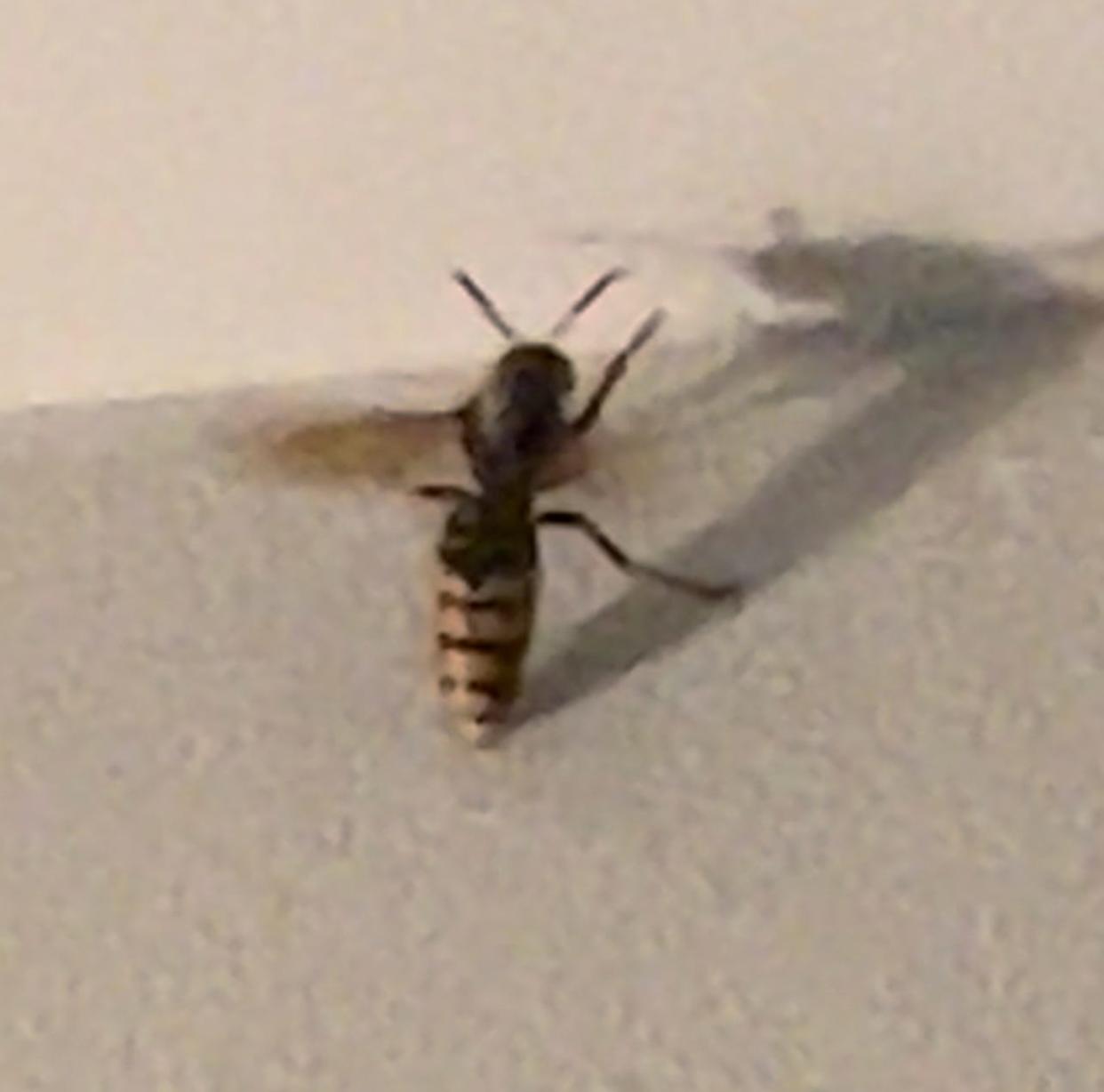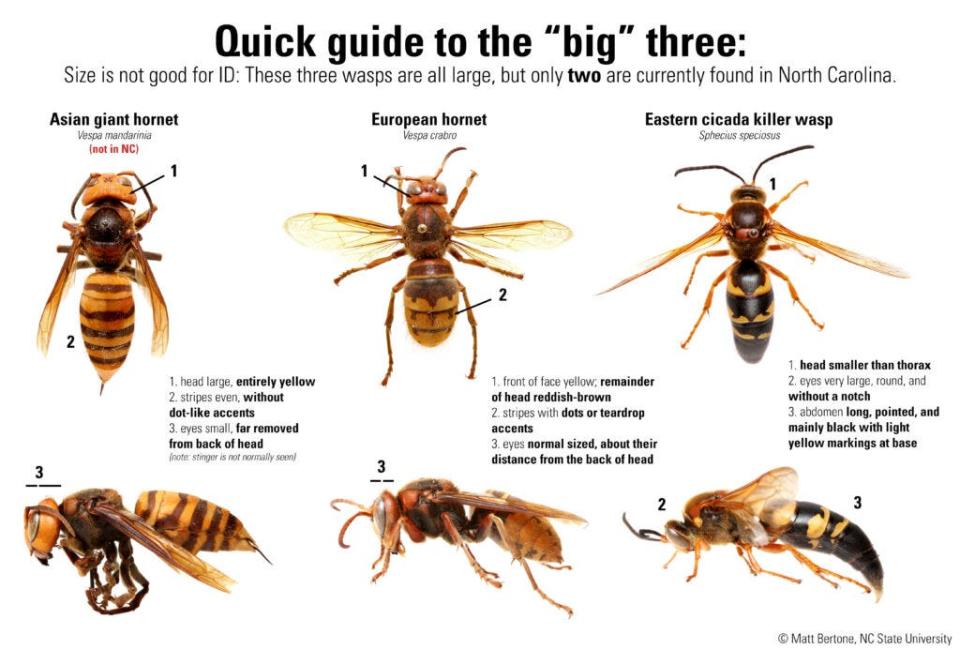Answer Woman: Did I find a 'murder hornet' in my backyard?

Today's burning question is about big wasps and whether murder hornets have made their way to Western North Carolina. Got a question for Answer Man or Answer Woman? Email Executive Editor Karen Chávez at KChavez@citizentimes.com and your question could appear in an upcoming column.
Question: I saw what is possibly the first confirmed sighting of a murder hornet in NC in years. At first I thought it was a dragonfly it was so big but when it stopped, I could see it was a monstrous bee-looking creature. Let me know what you think!
Answer: Good news for our reader. We were able to confirm that the insect in question was not a murder hornet, but was most likely one of several species of stinging insects native to the United States.
“Murder hornets,” a popular and menacing nickname for Asian giant hornets, are the largest species of hornet on Earth. As you might guess based on their name, these insects are native to Southeast Asia and, luckily for N.C. residents, have never been found in North Carolina or any state in the American South.
More: Answer Woman: Are motorized vessels allowed on the French Broad River?
More: Answer Woman: Curbs trapping debris? How often are roads swept?
Much to the horror and morbid fascination of United States residents, the first Asian giant hornet on U.S. soil was discovered in 2019 on Vancouver Island, British Columbia. The first nest of hornets was located in October 2020 in Blaine, Washington. There have been several Asian giant hornet sightings in the U.S. from this point onwards. Climates in Southern states, however, are inhospitable to the hornets.
Washington State entomologist David Crowder previously told USA Today, “It is highly unlikely that the hornets could make their way across the entire country. Much of the habitat in the central United States is completely unsuitable habitat for the hornets, as it is too hot and has too low rainfall. Thus, unless they are moved by humans, it would be nearly impossible for the hornets to make their way across the country on their own.”
Though there have been no true sightings of this species of hornet in N.C., there are several species commonly found throughout the state that are often misidentified by residents. Because of this, the entomology department at N.C. State University has made several reports on populations of the insects, and published the infographic below to help NC residents identify which species of wasp they’ve sighted.

More: Answer Woman: What does Biltmore do with its tulip bulbs? Can the public get some?
More: Answer Woman: How popular is Lake Powhatan campground? How many campsites?
Dr. Sydney Crawley, assistant professor in the Department of Entomology and Plant Pathology at N.C. State, provided further input. Crawley could not confirm an exact species due to photo quality, but was able to confirm that it was not a murder hornet.
“I have very active paper wasps on my property now, so I wouldn't be surprised if that is what they are seeing,” Crawley said. “I can confirm, however, that it is not an Asian giant hornet. No Asian giant hornets have been detected in the state.”
Crawley also offered another possibility for what the insect could be.
“People often confuse the European hornet for Asian giant hornets because they are similar in size and color. However, they are a completely different species and have been in the US since 1840.”
This article originally appeared on Asheville Citizen Times: Answer Woman: Did I find a 'murder hornet' in my backyard?

